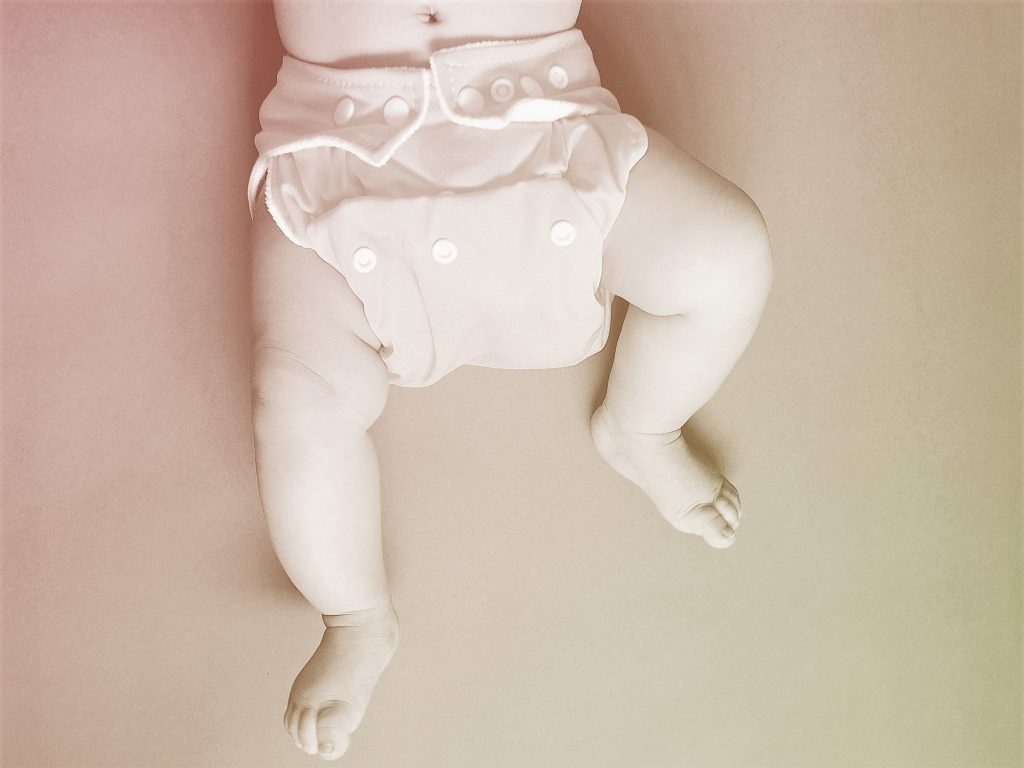Dumping expendable cloth diapers is more straightforward than you may might suspect. Look at our manual for find out with regards to the various sorts of material diapers, the assessed cost, and how to utilize them appropriately.
Assuming you’re similar to most guardians to-be, you might have articulated the accompanying words sooner or later: “I truly need to attempt material diapers, however it seems like an excessive amount of work.” Or: “It’s huge load of cash to spend direct front.” Or: “I can’t manage scratching child crap into a latrine.”
The truth of the matter is, fabric diapers accomplish require more work than just throwing a dispensable into the waste, and they aren’t the ideal decision for each family. Yet, on account of headway in present day tush-covering innovation, they might seem OK than you understand. Look at our introduction about material diapering—you may very well be roused to give an older style decision another look.
Sorts of Cloth Diapers
Fabric diapers have made considerable progress, with almost twelve sorts accessible available today. “There are such countless choices—regardless of your child’s body type or action level, there’s a style available that will work for the person in question,” says mother blogger Erin Odom, creator of Confessions of a Cloth Diaper Convert: A Simple, Comprehensive Guide to Using Cloth Diapers. This is what to be aware of the most well known choices.
Prefold Cloth Diapers
Prefold diapers are those fabric square shapes you picture when you consider old-school cotton diapers. They’ve been collapsed and sewed with more layers in the center to make a thicker focus. Prefold diapers arrive in an assortment of different textures, including bamboo and hemp, just as fluctuated sizes. At about $2 and up each, prefolds are the reinforcement of your most economical material diapering choice.
You’ll in any case have to get material diaper covers—the waterproof external layer that contains the internal prefold’s wetness and wreck. The most well known covers impersonate the state of disposables, folding over the prefold and shutting at a child’s hips with either a progression of snaps or Velcro, instead of tacky tabs. They’re typically made of a poly-mix texture with a waterproof overlaid inside and come in a wide range of shadings and prints. Cost per cover begins at about $8, with the normal arrival at about $12.
At the point when it’s the ideal opportunity for a diaper change, you can supplant the dirty prefold with a new one and reuse the cover (after a fast wipe-off, if essential), hence eliminating clothing. To ensure the prefolds stay set up, you can utilize separate stretchy one-piece clasp called Snappis, notwithstanding the snaps, or Velcro. At sleep time, many guardians get serious about prefolds, or add material additions called soakers, to endure the night without spills.
Crossover Cloth Diapers
Mixture diapers are intended to consolidate the advantages of fabric without hardly lifting a finger of disposables. They comprise of a waterproof external cover and two internal permeable layer choices: a fabric embed or an expendable addition. Material supplements are fundamentally rectangular sprinters, made in an assortment of textures including cotton, microfiber, or potentially hemp. They’re here and there loaded up with a super spongy microfiber. Expendable supplements are the single-use adaptation; you can purchase rolls of 100 additions for generally $10. The thought is that, similar to disposables, they’re helpful when you’re in a hurry, however they produce less waste than their regular cousins. They’re normally falling short on synthetic substances, and some are even biodegradable. You can reuse the diaper covers with half and halves as well.
Across the board Cloth Diapers
Across the board (AIO) diapers get their name from the way that they give both a spongy layer and a waterproof external shell safely. (Picture an all-fabric rendition of disposables.) You don’t have to stuff supplements, and you can throw the whole thing in the clothing when it’s filthy. As with prefold covers, they secure at the hips with one or the other Velcro or a progression of snaps. AIO material diapers start at around $20 a piece.
Pocket Cloth Diapers
Pocket diapers are like AIOs however highlight an implicit inside pocket, made from a wicking material, and contain a removable permeable supplement. You can redo your receptiveness level by attempting various embeds, or stuffing the pocket with two. Pocket diapers’ different pieces require less drying time than thicker AIOs. (Keep in mind, the two sorts are single-use diapers, and a diaper administration isn’t a choice, so clothing adds up!) “I stuff the supplements into my pocket diapers right out of the dryer so they’re all set, very much like disposables,” says Ellen Kucera, of Warren, Vermont, mother of 2-year-old Tarin and 11-month-old Eli. “They’re simple enough that sitters, day care focuses, and grandparents needn’t bother with an inside and out instructional exercise.” The expense is similar to AIO diapers.
One-Size Cloth Diapers
In all honesty, there are “one-size” diapers that develop with your child, “so you might possibly utilize precisely the same diaper on your eight-pound infant as you will when she is prepared to potty train,” Odom says. Snap or Velcro terminations let you adapt to estimate, and dynamically bigger additions oblige changing retentiveness needs.
One thing these choices share practically speaking: a wide exhibit of brilliant shadings and lovable plans, from underground rock skull-and-crossbones to fire engines and mustaches. They’re additionally, truly, on the pricier side, going from about $18-$30 for better quality standard brands.
Getting everything rolling With Cloth Diapers
Are you pondering, “how accomplishes fabric diapering work?” everything thing a material diaper amateur can manage is go to a store—regardless of whether it’s a major chain like Buy Baby or a nearby child shop—and look at the choices face to face, says Bryana Guckin, proprietor of Diaper Junction in Virginia Beach, Virginia, and mother of three, who has sold material diapers available and online for almost 10 years. “There are so many decisions, it very well may be overpowering,” she clarifies. “On the off chance that you can see the diapers very close, they seem OK.”
Before you put a major load of cash in a specific brand, attempt a wide range of styles and sorts of fabric diapers to see what turns out best for your darling. You could likewise acquire from companions, attempt transfer stores or online diaper-trade locales, or visit the Facebook and Twitter pages of different brands, as organizations at times issue calls for analyzers. Eventually, everything descends to your (and your child’s) individual inclination.
Similarly as with new child garments, you’ll need to run just-purchased fabric diapers through the clothing. Set the cycle on hot with a touch of gentle cleanser. The special cases: diapers made of hemp, which should be washed upwards of 8 to10 times prior to becoming retentive; cotton, which should be washed 4 to multiple times; and bamboo, which ought to be washed 2 to multiple times.
What number of Cloth Diapers Do I Need?
Regardless of which kind of fabric diaper you use, realize that infants typically go through 10 to 12 diapers each day; little children by and large go through six to eight; and children being potty prepared generally just need up to four diapers every day.
Remembering this, you’ll require a few dozen diapers or diaper-in addition to embed sets for an infant, as per Shannon Griffith, proprietor of Green Diaper Babies fabric diaper administration in Chicago. (You’ll require less as your child gets more established.) If you utilize a week after week diaper administration, you’ll require around 75-80 diapers.
Fabric diapering is simpler assuming you put resources into certain adornments: a diaper bucket for putting away the dirties prior to washing, a waterproof “wet sack” for reserving made a mess in pants when you’re in a hurry, expendable diaper liners, and a diaper sprayer for flushing strong waste off diapers and into the latrine. Material diaper-safe cleanser is an absolute necessity, as well: In request to assist with keeping up with the diaper’s retentiveness, you’ll need to pick an item liberated from cleansers, stain watches, and oils.
The amount Does Cloth Diapering Cost?
Valid, you can drop about $500-$600 to set your nursery up for material diapers, particularly assuming you’re purchasing shiny new pocket, one-size, or AIO styles. Assuming that you go fabric and wash them yourselves, the expense more than two years may be somewhere in the range of $800 and $1100—about half as much as disposables, which Odom gauges cost essentially $1,400 for quite some time. Material diapering a subsequent kid will just cost you the clothing and cleanser.
Obviously, the cost will fluctuate dependent on the sort of material diapers you pick, where you get them, and the number of you get. A few families spend under $600 on fabric diapering, while others burn through $1,500 or more.
Additionally remember that material diapers have a superb resale esteem. “You could sensibly acquire back a large part of the expense by selling your diapers after your youngster grows out of them or potty trains,” Odom says. One more method for saving: Buy mint-condition utilized material diapers on the web. Mothers to-be frequently stock up on one brand while pregnant, just to find they incline toward an alternate brand once their child shows up. Then, at that point, there are mothers who offer entirely great diapers to move up to the freshest plans. Set aside cash by purchasing their cast-offs.
Shouldn’t something be said about Diapering Services?
In the event that your inspiration to utilize fabric did not depend on accounts, and the possibility of home washing is a scary one, you might need to select a neighborhood diaper administration. Generally speaking, benefits currently utilize biodegradable cleansers in their cleaning cycle rather than the destructive phosphates of old. Like disposables, the expenses of utilizing a diaper administration in addition to diaper covers will fall in the scope of $2,000-$2,500 more than a long term period.
The Bottom Line
You don’t should be a no-nonsense, win big or bust material diaper client. A few guardians use disposables in the initial not many weeks after their kid is conceived, then, at that point, change to material. Others use material at home however travel with disposables. Still others go above and beyond course, which consolidates the smartest possible solution: a launderable cover that never truly interacts with any organic liquids (save an intermittent victory), in addition to a flushable and biodegradable supplement that won’t stick around the planet for up to an expendable diaper. Pick the choice that is best for your family, and don’t stop for a second to connect with your pediatrician for help.

